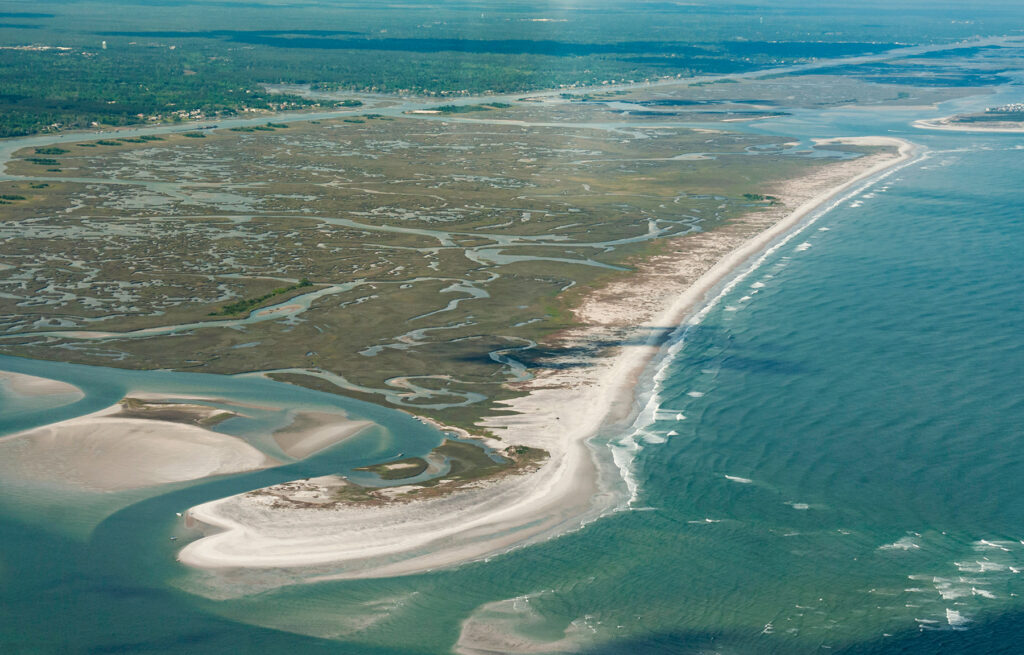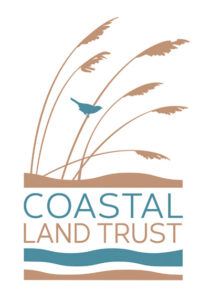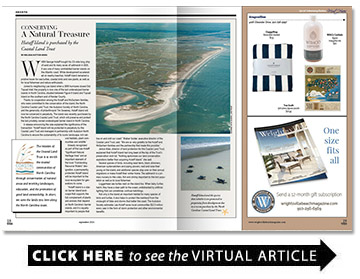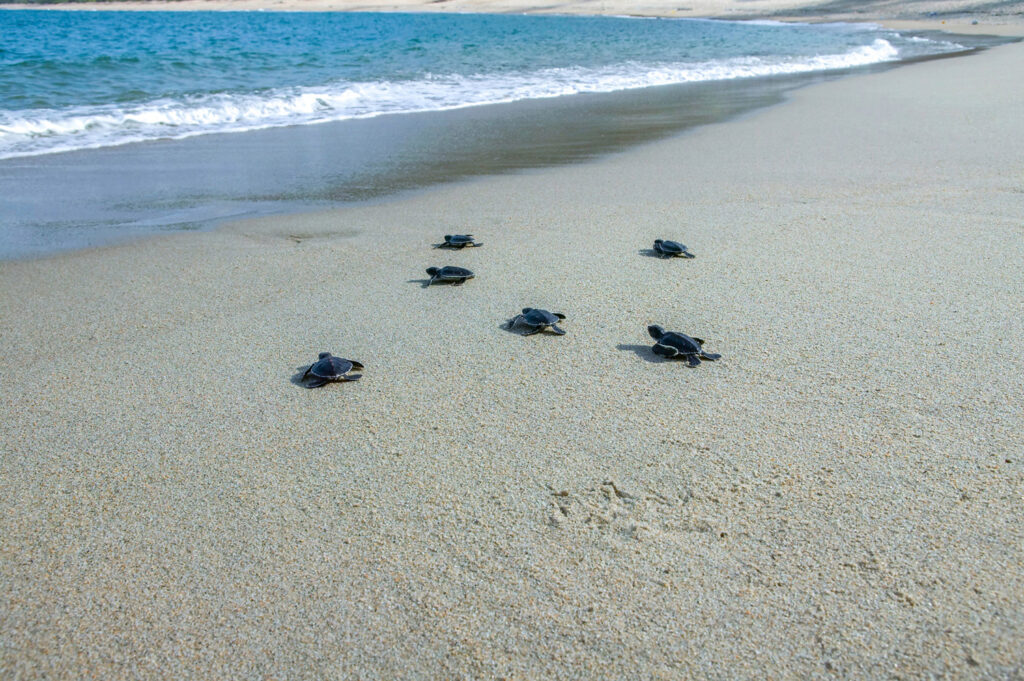Conserving A Natural Treasure
Hutaff Island is purchased by theCoastal Land Trust
BY Melissa Sutton-Seng

When George Hutaff bought his 2.5-mile long strip of sand and its many acres of saltmarsh in 1925, it was one of many uninhabited barrier islands on the Atlantic coast. While development accelerated on nearby beaches, Hutaff Island remained a pristine haven for sea turtles, coastal birds and rare plants, as well as for local fishermen and nature enthusiasts.
Joined to neighboring Lea Island when a 1998 hurricane closed Old Topsail Inlet, the property is now one of the last undeveloped barrier islands in North Carolina, situated between Figure 8 Island and Topsail Island on the southern end of Pender County.
Thanks to cooperation among the Hutaff and McEachern families, who were committed to the conservation of the island, the North Carolina Coastal Land Trust, the Audubon Society of North Carolina, and the generosity of philanthropist Tim Sweeney, Hutaff Island will now be conserved in perpetuity. The island was recently purchased by the North Carolina Coastal Land Trust, which will preserve and protect the last privately owned undeveloped barrier island in North Carolina.
A release announcing the sale explained the significance of the transaction: “Hutaff Island will be protected in perpetuity by the Coastal Land Trust and managed in partnership with Audubon North Carolina to ensure the sustainability of its iconic landscape, rich natural habitats, plant communities and wildlife.”
Already recognized as part of the Lea-Hutaff “Significant Natural Heritage Area” and an important element of the local “Outstanding Resource Waters” designation, a permanently protected Hutaff Island will be important to the local ecosystem for generations to come.
“Hutaff Island is a classic barrier island landscape that supports the full complement of plants and animals that depend on North Carolina’s barrier islands, and it is equally important to people that live on and visit our coast,” Walker Golder, executive director of the Coastal Land Trust, said. “We are so very grateful to the Hutaff and McEachern families and the partnership that made this possible.”
Janice Allen, director of land protection for the Coastal Land Trust, explained that Hutaff Island had long been at the top of the Trust’s preservation wish list. “Nothing epitomizes our land conservation aspirations better than acquiring Hutaff Island,” she said.
Several species of birds, including least terns, black skimmers, American oystercatchers and piping plovers, nest and raise their young on the island, and additional species stop over on their annual migrations or make Hutaff their winter home. The saltmarsh is a primary nursery to the crabs, fish and shrimp important to the bird population as well as to local fishermen.
Loggerhead sea turtles nest on the island too. When baby turtles hatch, they have a clear path to the ocean, undistracted by artificial lighting that can sometimes confuse hatchlings.

Not only is the island an important habitat for many species of birds and turtles, it also helps to protect the mainland from the onslaught of tides and storms that batter the coast. The Audubon Society estimates Lea-Hutaff saves local communities $12.3 million every year in the form of storm protection and other environmental benefits.
The mission of the Coastal Land Trust is to enrich the coastal communities of North Carolina through conservation of natural areas and working landscapes, education, and the promotion of good land stewardship. In short, we save the lands you love along the North Carolina coast.

